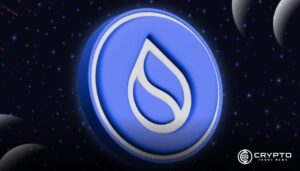- Sonic’s $1B TVL in 66 days shows rapid adoption, outpacing major blockchains and proving strong market confidence in its model.
- The Sonic Fee Program rewards developers with 90% of gas fees, fueling innovation and driving sustained long-term ecosystem growth.
- Sonic’s explosive growth highlights a shift in blockchain incentives, prioritizing builders over liquidity providers for lasting expansion.
Sonic $S achieved $1 billion in Total Value Locked (TVL) in just 66 days, according to CryptoBusy. This quick expansion surpassed those of the main Layer-1 blockchains, such as Aptos, Solana, and Sui. In contrast, Sui took 505 days, Aptos took 709 days, and Solana took over a year to reach the same milestone. Sonic’s quick adoption thus points to a shift in both market trust and blockchain incentives.
The Sonic Fee Program: A Game-Changer
Besides rapid adoption, Sonic’s Sonic Fee Program is a key driver of its success. Unlike traditional models, where validators or foundations benefit from gas fees, Sonic directs 90% of fees back to developers. Hence, developers of dApps, smart contract creators, and builders receive direct compensation. Because developers have financial incentives to promote user involvement and ecosystem growth, this paradigm encourages innovation.
Moreover, this approach has attracted a surge of developers eager to build within Sonic’s ecosystem. By rewarding code instead of just liquidity, Sonic fosters sustained long-term growth. Additionally, this structure enhances network utility by incentivizing continuous contributions from builders.
Comparing Growth Trajectories
Sonic’s growth trajectory is steeper than its competitors. The project reached $1 billion TVL at an unprecedented pace. Meanwhile, Sui took nearly 16 months to achieve the same feat. Similarly, Aptos took over 23 months, reflecting a more gradual adoption curve.
However, the differences in adoption speed highlight unique factors influencing each blockchain. Sui, despite slower initial growth, eventually peaked above $2.5 billion. This suggests long-term resilience. On the other hand, Aptos showed steady but slower growth, prioritizing stability over rapid expansion.
Sonic’s ability to scale so quickly underscores its strong developer incentives. Moreover, the network’s momentum continues, suggesting further growth in TVL and user adoption. Additionally, its innovative economic model fosters sustainable demand, positioning it as a formidable competitor in the blockchain space.
Sonic’s remarkable TVL growth proves that incentives matter. By prioritizing developers, it ensures continuous ecosystem expansion. Furthermore, its rapid adoption signals a shift towards blockchain models that reward builders, not just liquidity providers.






